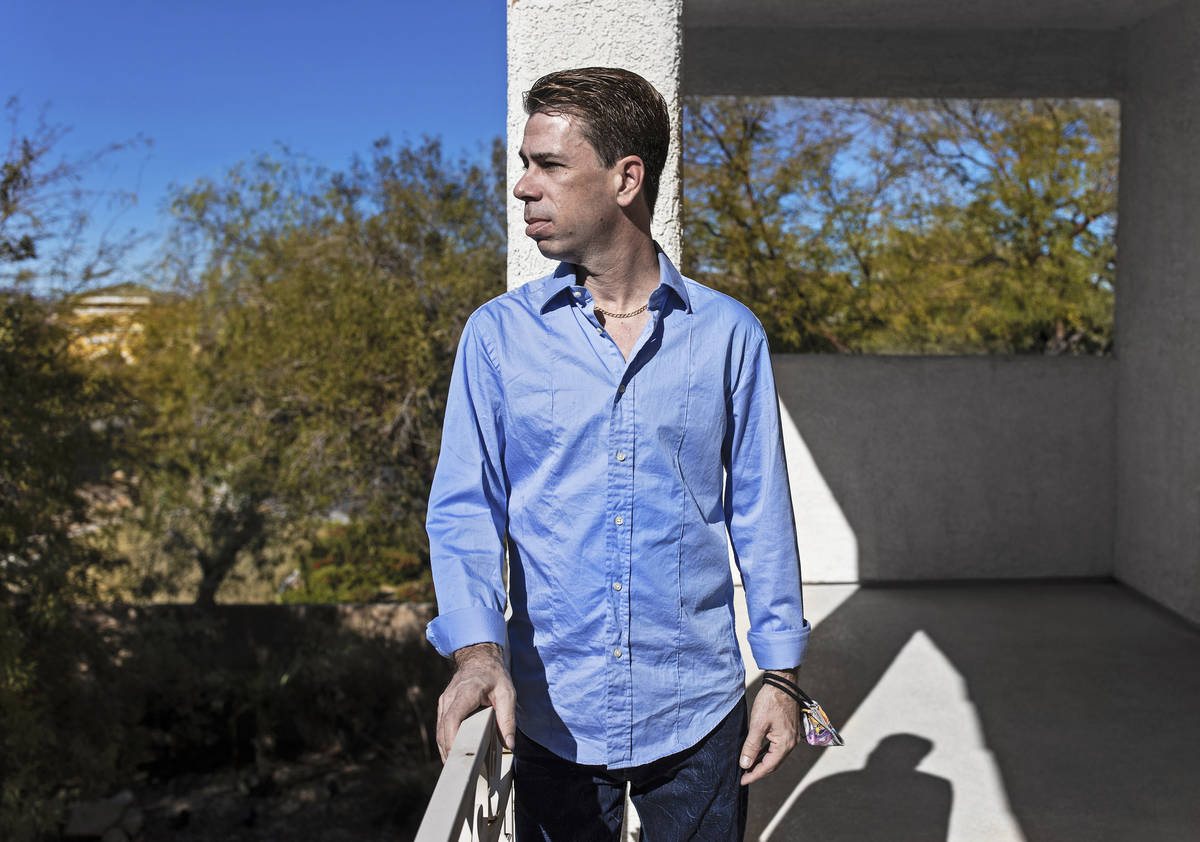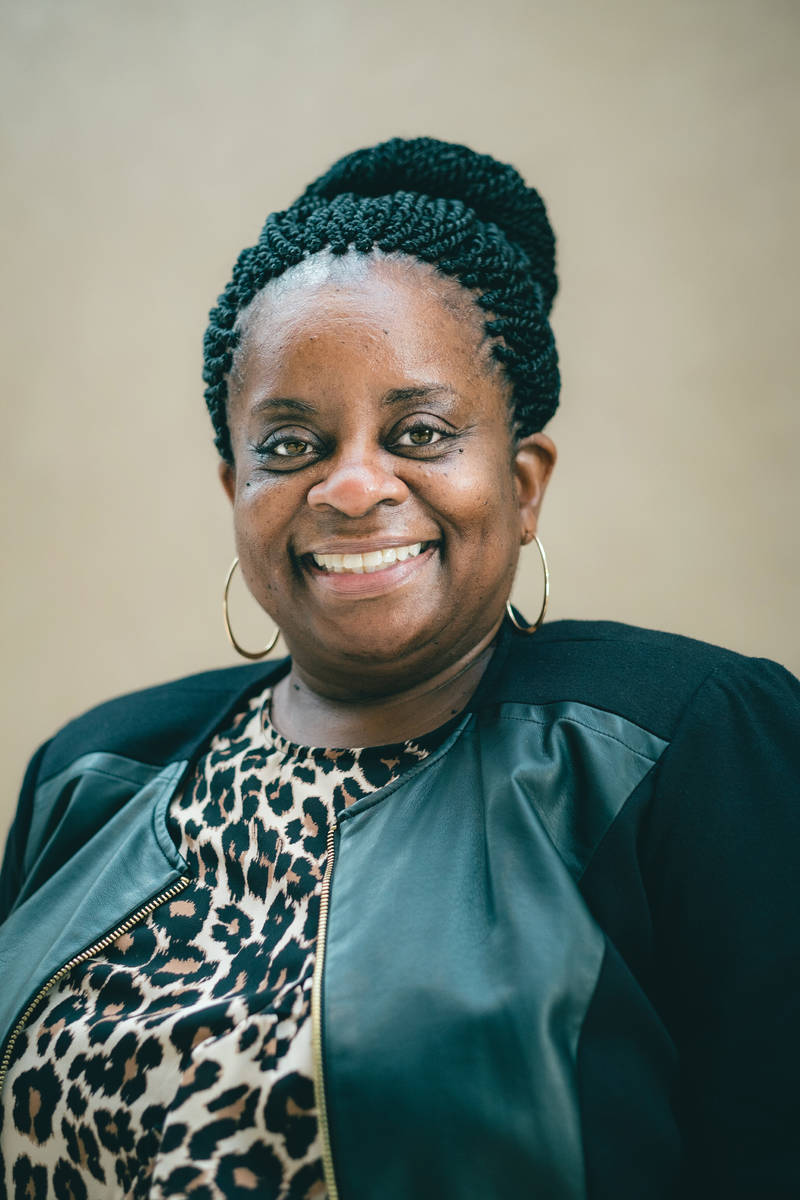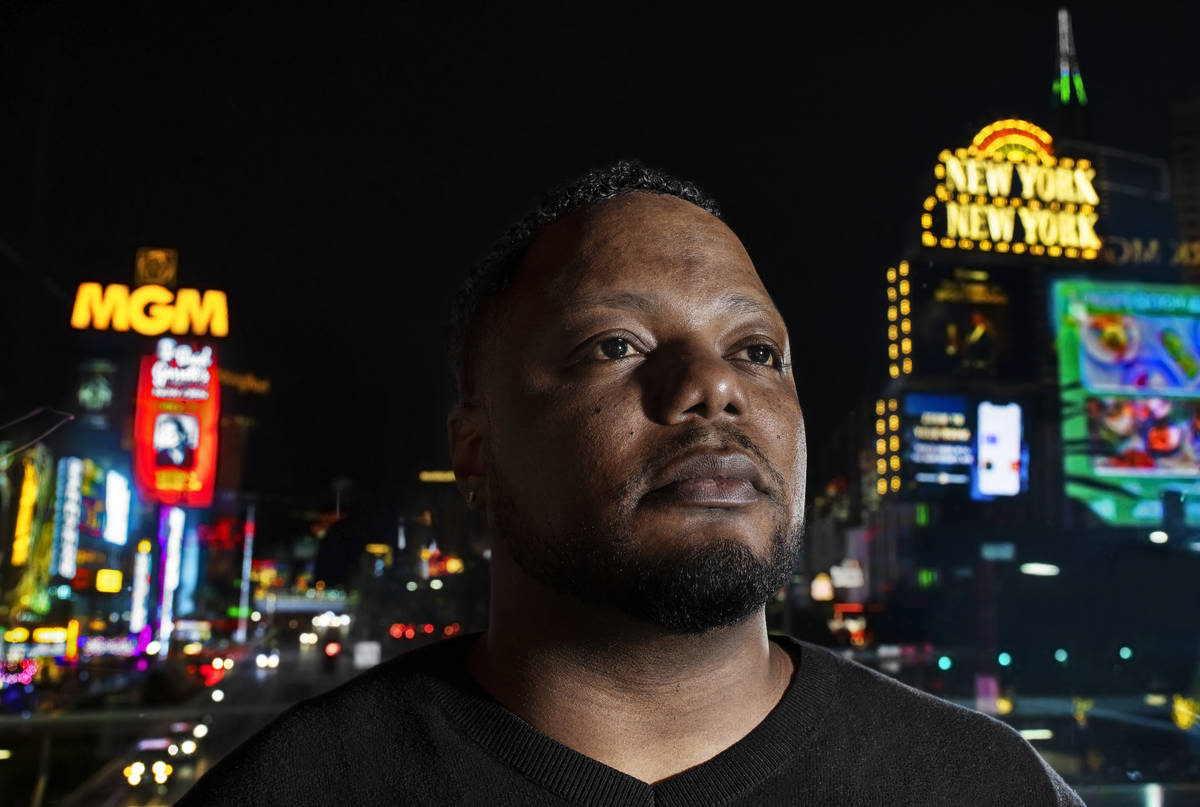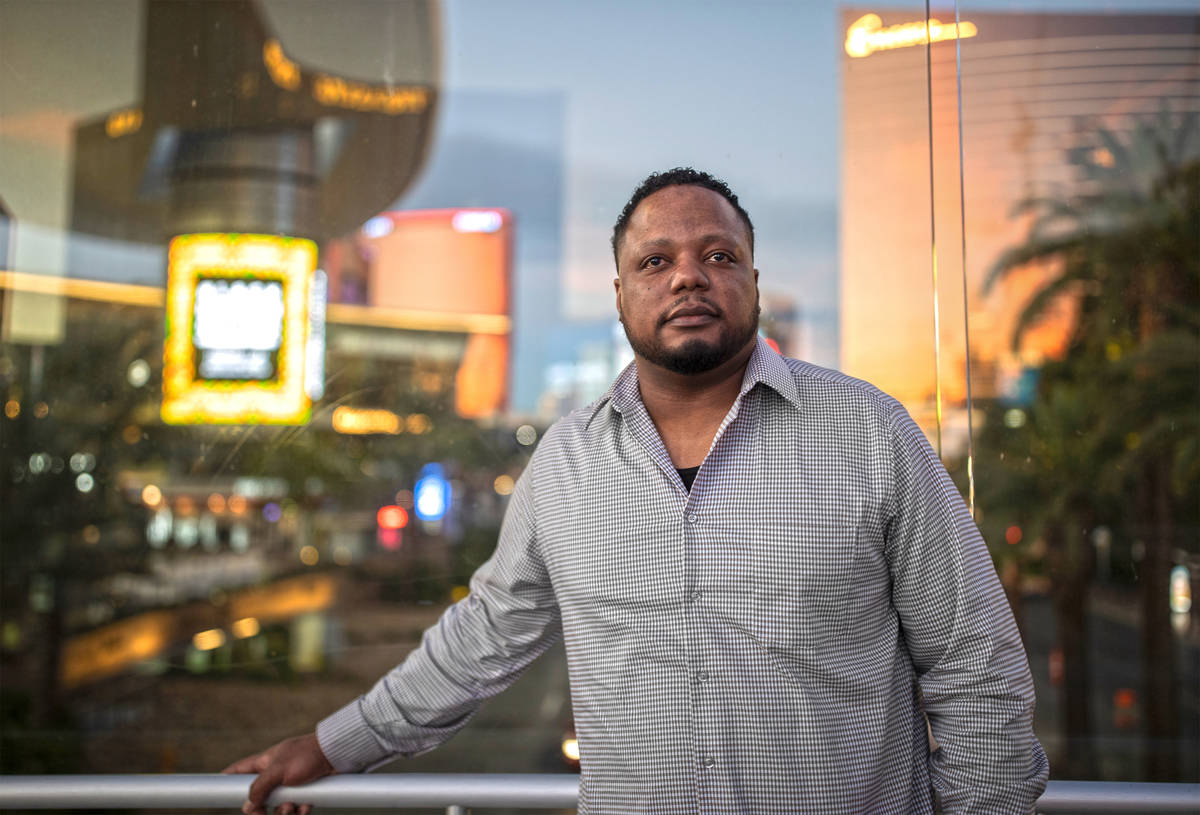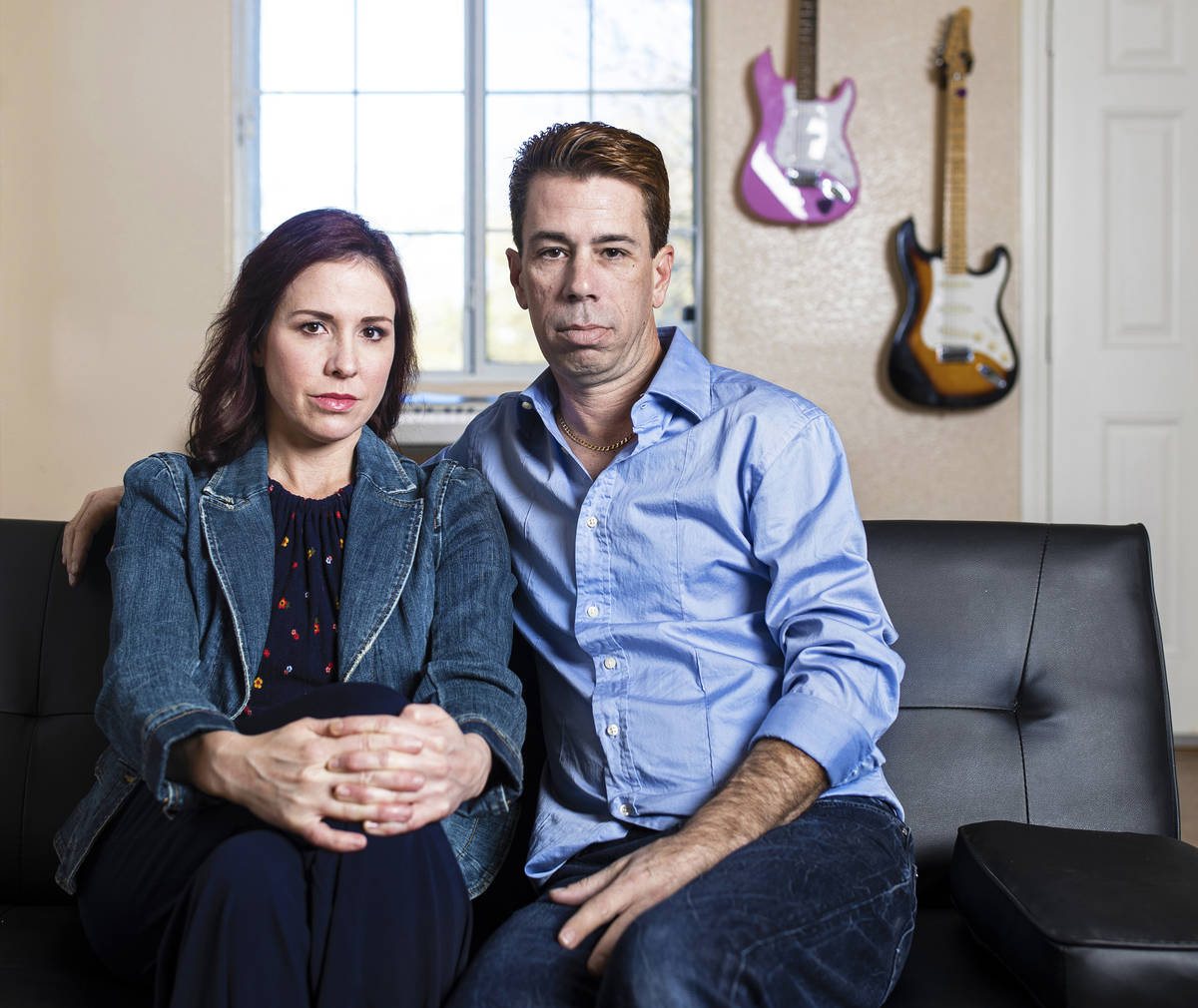Las Vegans struggle with rent, mortgage during pandemic
The memory delivers a chill, just like the air that night.
It was 3 a.m. and Marian Green’s son wasn’t feeling well.
He had to use the restroom. Only there was no restroom.
They were living in a car — Green, her two kids and the family dog.
“Everywhere was closed,” Green recalls of the fall night in question. “It was bad. It was cold.”
They had parked at a church for the evening, one of the few places they felt safe.
But J.J., 17, needed a bathroom.
“We said, ‘Sorry, Lord,’ Green says, “but he had to run off to the bushes.”
It was a harsh moment in a year that was harsher still.
Just before the pandemic hit, Green lost her job as a timeshare representative for a local hotel. Then the COVID shutdown made finding employment in her industry a Sisyphean task.
“To look for a job there, it was impossible,” she says.
When money ran out, Green found herself living out of her then-boyfriend’s car.
Months later, in November, the family finally would receive housing aid from the county and find a home, helping furnish it through a GoFundMe account established for their benefit by one of J.J.’s high school teachers.
They had weathered the storm.
But the Green family’s plight illustrates in wrenching detail the blunt-force impact the pandemic has had on the struggle for many to maintain a roof over their heads.
While eviction moratoriums have prevented a surge in homelessness in a metropolitan area where the 11.8 percent jobless rate is the highest in the U.S. among large metro areas, the fight to keep current with rent and mortgages is a very real one for many across the valley. Potentially dire consequences could befall those who are struggling should those protections be lifted while the unemployment level remains so high.
“We are definitely seeing an increase in calls for assistance — rental assistance, legal advice,” says Kathi Thomas-Gibson, director of community services for the city of Las Vegas. “Often what happens is there are some leading indicators before a family spirals into homelessness. They will start accessing services that they haven’t accessed before, like food pantries, food banks. We are seeing a very significant increase in requests for referrals for supportive services. People feel helpless and hopeless, and we know very soon that we could actually see those folks perhaps in the streets.”
Even if things never get to that point, stress levels remain high for many as they toil to establish a measure of domestic stability in a decidedly unstable economy.
“When you actually talk to people who are in this, on the other end of that phone call, there’s just this horrible desperation, like, ‘How am I going to get out of this?’” says Aaron Sheets, who helps place people in homes as director of operations/finance for HopeLink of Southern Nevada. “We keep trying to reassure them, ‘Yes, help is coming, help is available.’
“It’s just (that) getting it to enough people fast enough is always going to be the problem,” he adds. “Nobody was prepared for this level (of need) and this length of time.”
Feeling the pandemic’s pinch
Her hours were chopped like the bangs she cuts for a living.
When the pandemic shutdown occurred in March, Cassandra Gutierrez was furloughed for two months from her job at SuperCuts.
Once the shop reopened, she only could work three days a week because the single mother of three had to stay home with her two school-age children on Mondays and Fridays, with classrooms closed.
Even when on the job, though, business is hardly booming.
“People are afraid to come in,” she explains. “Every week, it’s like we’re doing a new makeover on people because it’s been three, four, five months since we’ve seen these people. I might one day leave work with $12 in tips. That’s how bad it is.”
What’s more, Gutierrez, 51, is working toward a career change, trying to become a corrections officer with the Metropolitan Police Department.
She already has passed the written test but now is training multiple days a week to pass the physical exam, juggling it all while trying to make ends meet.
“Sometimes I leave the house at eight and I don’t come home until nine, 10 at night,” she says. “It’s just crazy.”
Despite all of her efforts, Gutierrez’s current $9 an hour wage doesn’t cover her bills. She has tried side work delivering for UberEats and Postmates, but still it isn’t enough.
She has been able to make her car payments but is $2,000 behind on her energy bill and has struggled to keep up with her rent.
“I’ve been falling where I’m $200, $300 short,” Gutierrez says. “One month, the lady here at the leasing department put in $200. If she hadn’t done that, I wouldn’t have been able to make my rent.”
This is the economic calculus many have had to make as the pandemic stifles their incomes: which bills to pay and which ones to let slide temporarily — a perilous juggling act that can lead to high debt and low credit scores.
With COVID damaging almost every sector of the economy, even those in formerly stable industries with healthy incomes have seen their lives turned upside down and their housing situations thrown into question.
California transplant Sirquon Hardy, who moved to Las Vegas with his two daughters in late 2018, lost the house he was in the process of buying after he was laid off from his $90,000-a-year job as a project manager for gaming and lottery company Scientific Games, which suffered from COVID’s devastating impact on the casino industry.
“I went from being on my way to being on good footing by way of the amount of money I was making to … a lot of unknowns,” says Hardy, who lives with his sister and brother-in-law. “Losing my house, losing my health insurance, it all piled up.”
The stress was so much that Hardy began developing health issues, including high blood pressure, this past summer as his severance package began to run out and he was forced to rely on costly, temporary health insurance in place of the employer-based coverage he lost.
“That’s when I started running up medical bills because the temporary insurance doesn’t cover that much,” Hardy says. That only added to his financial woes.
“It was just a domino effect of coming from California,” he continues, “getting to the point where I’m solid out here and then everything just going away as a result of the pandemic.”
Grasping a helping hand
When the entertainment and convention businesses went dark, the lights went out on the lighting designer.
A veteran of the lighting industry, David Schulman’s last gig came in mid-March. Like many in his shoes, he fell behind on his rent that month and in April. Fortunately, there were some safeguards in place.
“The SBA opened up and allowed us to take economic loans,” Schulman says, referencing economic aid provided by the Small Business Association. “Those pretty much saved our lives in a lot of ways. That allowed us to pay off our back rent, to find new housing, and, at least, gave us some cushion.”
Schulman and his girlfriend also received aid from the CARES Housing Assistance Program, which helps Clark Country residents pay their rent and utilities. Though CHAP is currently idle as it awaits more funding, it has been a lifeline for many.
“When we had CHAP assistance, the requests were mind-boggling,” Sheets says. “We were tracking 1,000 calls a day.”
“There’s been a few indicators of things changing out there,” says Leslie Carmine, media and community relations director of Catholic Charities of Southern Nevada. “Mostly it’s for services that are (for people) on the verge, people who maybe have never had to ask for help before. For instance, our food pantry. If someone can save a little bit of their earnings for the month by allowing us to provide their groceries, then they can utilize those funds for rent or bills or things like that that are a little more important to keeping them stable.”
In November, Catholic Charities launched a housing navigation center with an office on their campus where a case worker helps with the process of finding housing assistance.
“Hopefully this will be a resource that people can turn to and help them get through the steps and find other help, too,” Carmine says.
While the homeless population hasn’t substantially increased yet because of the pandemic, experts warn that could change quickly.
“Right now we’re having the support of the government, where people aren’t being forced out of their housing, so we’re not seeing a lot of people on the streets yet,” community advocate Michael Fischer says. “Once the government allows landlords and banks to foreclose, that’s when we’re going to start seeing the impact.
“You’re going to see an increase without a question,” he says, of people falling victim to homelessness. “You’re going to see people on the streets that you ordinarily wouldn’t see.”
Before the pandemic, Nevada already had a serious homeless issue.
“Nevada is one of the top states when it comes to overall homelessness,” says Adam Johnson, a senior research analyst for insurance industry company QuoteWizard, which recently issued a report examining data on the rate change of homeless assistance programs. “There are 23 homeless per 10,000 people, which ranks in the top 10 in states.”
While homelessness actually declined 6.4 percent in Nevada from 2018 to 2019, a sign of progress when nearby states such as Oregon and California saw substantial increases in the same timeframe, Nevada ranks just 33rd in providing support for the homeless, according to Johnson.
But Las Vegas is at the precipice of a much larger crisis.
Now, it’s all about holding on.
“There’s so many people who are going through this,” Gutierrez says. “You don’t know how many people — I have cut their hair — and they say they’re still not back to work. I feel for those people.
“I’m not giving up. I’m a fighter,” she continues, referencing her own struggles. “I’ll cry at night, but you get up and you do it all over again.”
Contact Jason Bracelin at jbracelin@reviewjournal.com or 702-383-0476. Follow @JasonBracelin on Twitter and @jbracelin76 on Instagram




